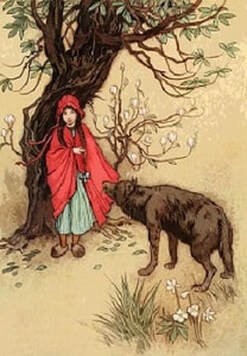True Stories
 When my daughter was a preschooler, we would read bedtime stories before she got tucked in for the night. One evening, after a fairly typical fairy tale (trolls, wicked stepmothers, enchanted castles, dragons, and so on), my daughter precociously asked, “Daddy, is that story true?” She sounded as if she was somewhere between incredulity and skepticism.
When my daughter was a preschooler, we would read bedtime stories before she got tucked in for the night. One evening, after a fairly typical fairy tale (trolls, wicked stepmothers, enchanted castles, dragons, and so on), my daughter precociously asked, “Daddy, is that story true?” She sounded as if she was somewhere between incredulity and skepticism.In that moment, I have to admit that I was faced with a bit of a dilemma. I could say, perhaps condescendingly, “No, darling daughter, it’s not true. It’s just a story. Now go to sleep.” Or I could say, “Yes, it is true. A good story carries a truth.” At that point, I think that if I had made such a statement my daughter would have said, “Thanks, Dad, but it’s too late for teaching. Turn out the light and let me go to sleep!”
To tell the truth, I can’t remember how I replied to her question. But the question about truth and stories has always been at the back of my mind. The phrase, “It’s just a story”, has always given me pause.
The word true has its origins in the Proto-Indo-European (PIE) root dru (tree) and PIE dreu (to be firm, solid, steadfast).
Let me digress for a moment. Think about trees. They start as seeds and over time can grow to enormous size and strength. Think of the tree outside your window. It probably looks the same in the morning as it does in the afternoon. It may even look the same from one month to the next. But think of trees from one season to another—during the fall they lose their leaves, they rest and renew, and in the spring they burst forth again with leaves and growth. Think about how a tree slowly grows and changes from one year to the next.
What did ancient peoples see or feel about trees that called forth what we now know as the word true? Do the words firm, solid, steadfast in the midst of change indicate what they might have seen in trees and also valued in themselves and in others? Perhaps trees called forth such values from them. In any case, it is clear from historical records that ancient peoples respected and honored the truths which they saw in trees.
Dare I ask if a truth can grow just as a tree can grow? Can a small truth or insight grow into a larger truth just as an acorn grows into a mighty oak? Or, is a truth a truth and it is our knowledge and understanding of it that grows and changes? It seems no surprise that even today the tree is often seen as symbol of knowledge and truth. I realize that I have severely digressed and am speaking metaphorically and not etymologically at this point.
Back to etymology. From PIE dreu comes Proto-Germanic treuwaz (having or characterized by good faith), and Gothic triggws (faithful, trusty; being 'true' to your word). These words come to Old English as trow (to confide, to trust, to believe) and suggest that something is ‘true’ because we ‘trust’ or ‘have faith’ that it is true. The modern German word treu, from these origins, still means faithful.
The phrase ‘true love’ is from Old English treolufu (literally ‘tree love’); that is, love as true as the strength and steadfastness of a tree.
True, meaning consistent with facts or evidence, is first recorded around 1200; true, meaning something real or genuine or not counterfeit is from the late 14th century; true, meaning something conforming to a certain standard is from around 1550.
The phrase ‘to come true’ (e.g., dreams that come true) comes from 1819. The verb ‘to true’ in the sense of to make consistent with a certain standard comes from 1841 (e.g., in carpentry, to make something level or square).
In brief, over the centuries, we see distinctions between truth as ‘fidelity’ or ‘faithfulness’ and truth as ‘factuality’. Does something being 'true' depend on having facts and evidence or having faith? It depends. Are we talking about facts or stories?
Online Etymological Dictionary, https://www.etymonline.com/
Published on December 16, 2020 19:41
No comments have been added yet.



